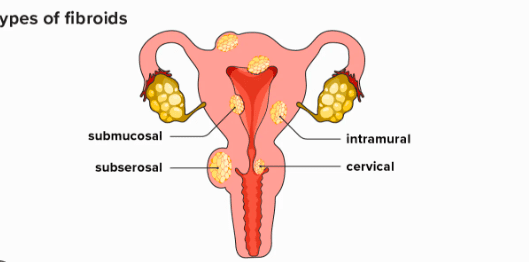Last Updated on March 12, 2024 by Nurse Vicky
The Impact of Fibroids in the Uterus: Understanding the Common Condition
When it comes to women’s health, there are several conditions that can affect their well-being. One such condition that many women face is the presence of fibroids in the uterus. Fibroids, also known as uterine leiomyomas, are non-cancerous growths that develop in the uterus. They can vary in size, ranging from small and undetectable to large and causing discomfort.
Understanding Fibroids: Causes and Symptoms
While the exact cause of fibroids is still unknown, several factors are believed to contribute to their development. Hormonal imbalances, particularly an excess of estrogen, are thought to play a role in their growth. Additionally, genetics, obesity, and certain lifestyle factors may increase the risk of developing fibroids.
Women who have fibroids may experience a range of symptoms, including:
- Heavy or prolonged menstrual periods
- Pelvic pain or pressure
- Frequent urination
- Difficulty emptying the bladder
- Constipation
- Back or leg pain
If you suspect you have fibroids or are experiencing any of these symptoms, it’s important to consult with your healthcare provider for an accurate diagnosis and appropriate treatment.
Treatment Options for Fibroids
The treatment for fibroids depends on various factors, including the size and location of the fibroids, the severity of symptoms, and the desire for future fertility.
Some common treatment options include:
- Watchful waiting: In cases where fibroids are small and asymptomatic, your healthcare provider may recommend monitoring them without immediate intervention.
- Medications: Certain medications, such as hormonal birth control or gonadotropin-releasing hormone (GnRH) agonists, may help manage symptoms or shrink fibroids temporarily.
- Minimally invasive procedures: Procedures like uterine artery embolization, myomectomy, or radiofrequency ablation can be performed to remove or shrink fibroids while preserving the uterus.
- Hysterectomy: In severe cases or when fertility is not a concern, a hysterectomy may be recommended to remove the uterus entirely.
It’s important to discuss the available treatment options with your healthcare provider to determine the best course of action for your specific situation.
Living with Fibroids: Tips for Managing Symptoms
While fibroids can be challenging to live with, there are several strategies that can help manage symptoms and improve overall well-being:
- Maintain a healthy lifestyle: Regular exercise, a balanced diet, and stress management techniques can contribute to overall health and potentially reduce the severity of fibroid symptoms.
- Stay informed: Educate yourself about fibroids and stay updated on the latest research and treatment options. This knowledge can empower you to make informed decisions about your health.
- Seek support: Connect with other women who have fibroids or join support groups to share experiences, seek advice, and find emotional support.
- Communicate with your healthcare provider: Regularly communicate with your healthcare provider about any changes in symptoms or concerns you may have. They can provide guidance and adjust your treatment plan accordingly.
Frequently Asked Questions
1. Are fibroids cancerous?
No, fibroids are non-cancerous growths that develop in the uterus.
2. Can fibroids affect fertility?
In some cases, fibroids can interfere with fertility. However, the impact varies depending on the size, location, and number of fibroids.
3. Can fibroids be prevented?
There is no surefire way to prevent fibroids, but maintaining a healthy lifestyle and managing hormonal imbalances may help reduce the risk.
4. What is the recovery time after fibroid removal surgery?
The recovery time after fibroid removal surgery depends on the specific procedure performed. Your healthcare provider will provide you with detailed information and post-operative care instructions.
5. Can fibroids come back after treatment?
In some cases, fibroids may recur after treatment. Regular follow-up with your healthcare provider is essential to monitor any potential reoccurrence.
6. Do all women with fibroids experience symptoms?
No, not all women with fibroids experience symptoms. Some fibroids may be small and asymptomatic.
7. Can fibroids be treated without surgery?
Yes, depending on the size and severity of symptoms, fibroids can be managed with medications or minimally invasive procedures without the need for surgery.
Conclusion
Fibroids in the uterus can have a significant impact on a woman’s health and quality of life. Understanding the causes, symptoms, and available treatment options is crucial for managing this condition effectively. By staying informed, seeking appropriate medical care, and adopting healthy lifestyle habits, women can navigate the challenges of fibroids and optimize their overall well-being.




